
Amelia Page
Climate change has led to altered phenology in passerine birds. The aim of this study is to see if a Cumbrian population of white-throated dippers (Cinclus cinclus) has been affected by changes in temperature and river flow caused by rainfall extremes. Resources used included long-term data sets of the dipper population, temperatures and river flow. Non-parametric statistical tests were used such as Kruskal-Wallis tests and Spearman’s Rank. A Dynamic Harmonic Regression model was created and a phase shift calculated for the temperature changes. The dipper population declined significantly and the first laying date advanced eight days between the two periods of study. However, there were limited links found between the population changes and the climatic variables. Some associations were found but were not statistically significant. It was found that the phenology of this dipper population was unlikely to have been significantly affected by the changes in climate. Reasons for this include weaknesses in the data and analysis, or that the dippers have begun adapting to changing climatic conditions.
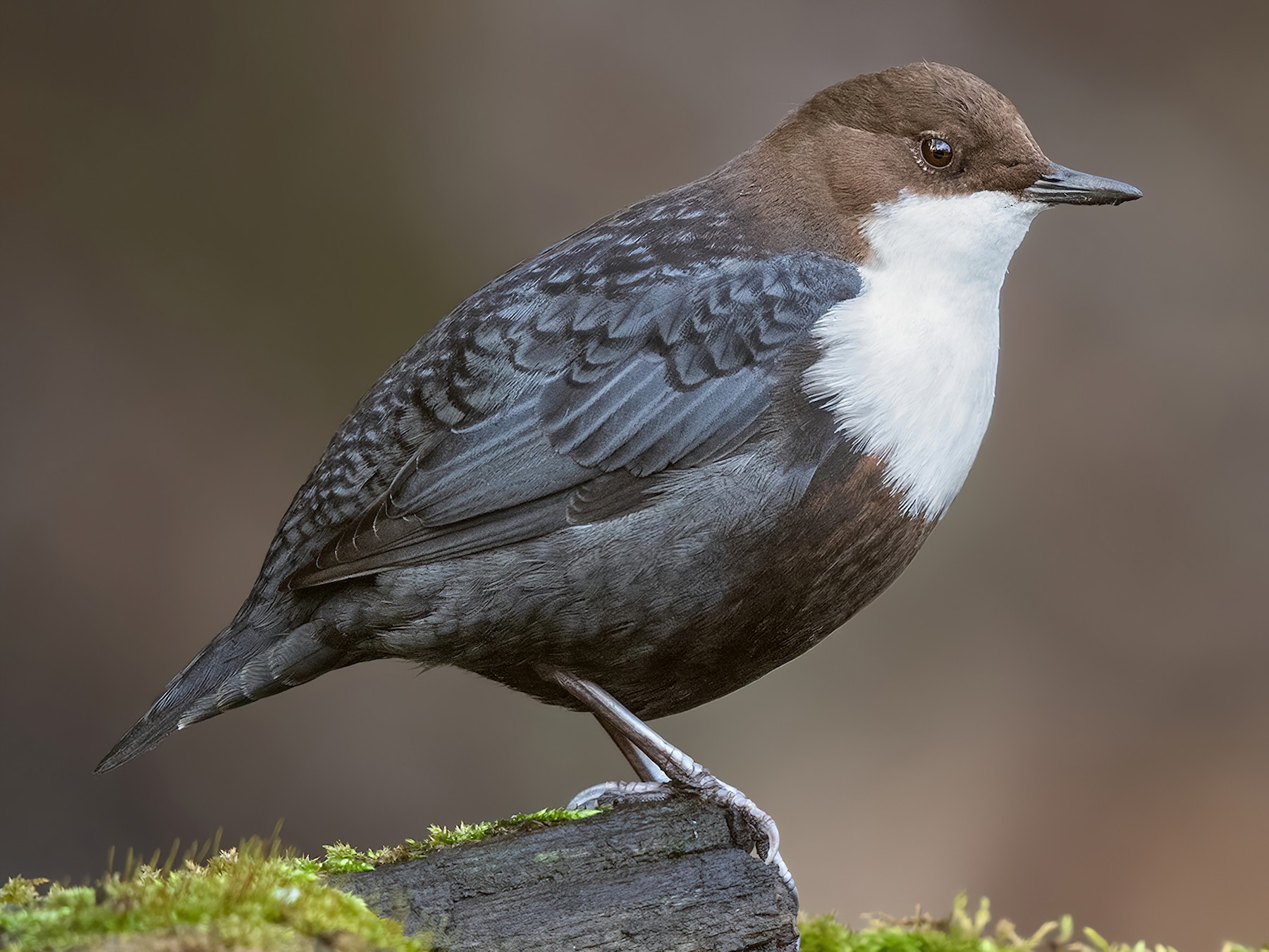
Amelia Page
Conclusions: Contrary to the hypothesis, climate did not have a significant effect on the dipper population and breeding patterns. This could be due to the small samples of inconsistent data and use of non-parametric tests. Furthermore, evidence of climate change can be hidden by normal weather fluctuations. Alternatively, the lack of any noticeable shift in the dipper's population and behaviours could suggest that the birds have begun adapting to changing climate conditions, preventing them from experiencing negative effects on breeding. Further research could investigate more weather conditions, multiple dipper populations and effects of land use change.
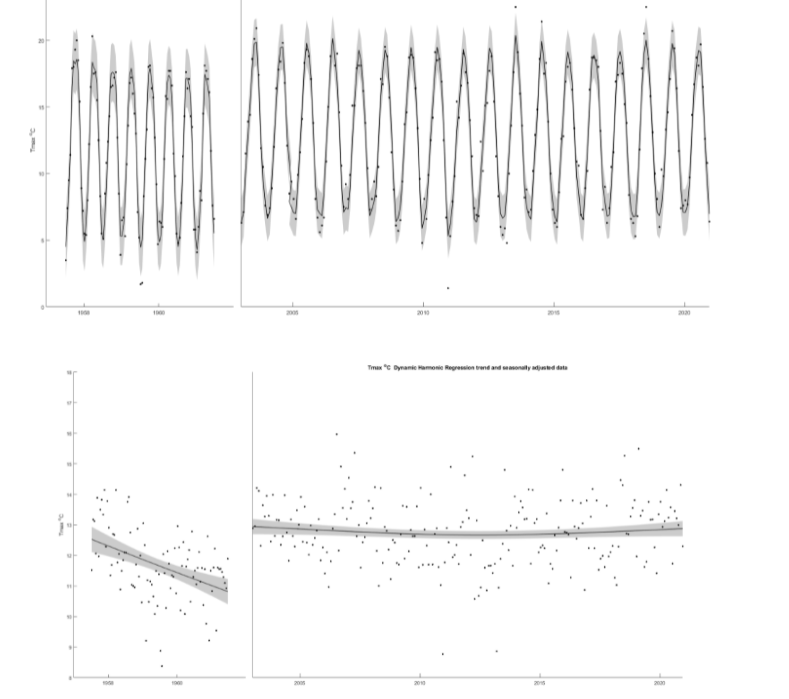
A Dynamic Harmonic Regression of monthly temperatures.
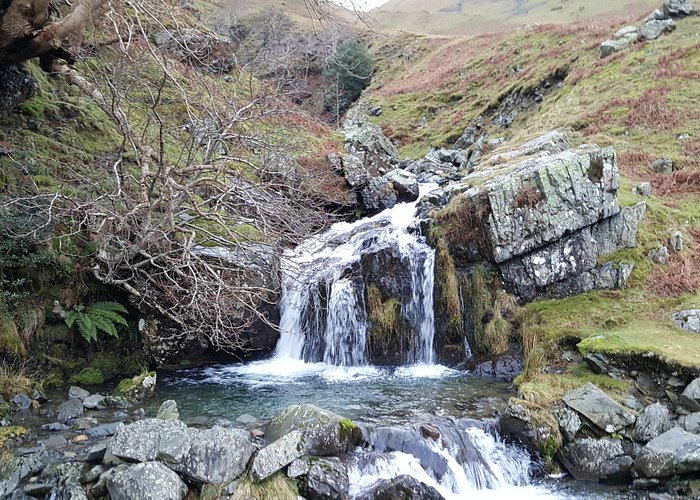
Sedbergh, Cumbria.
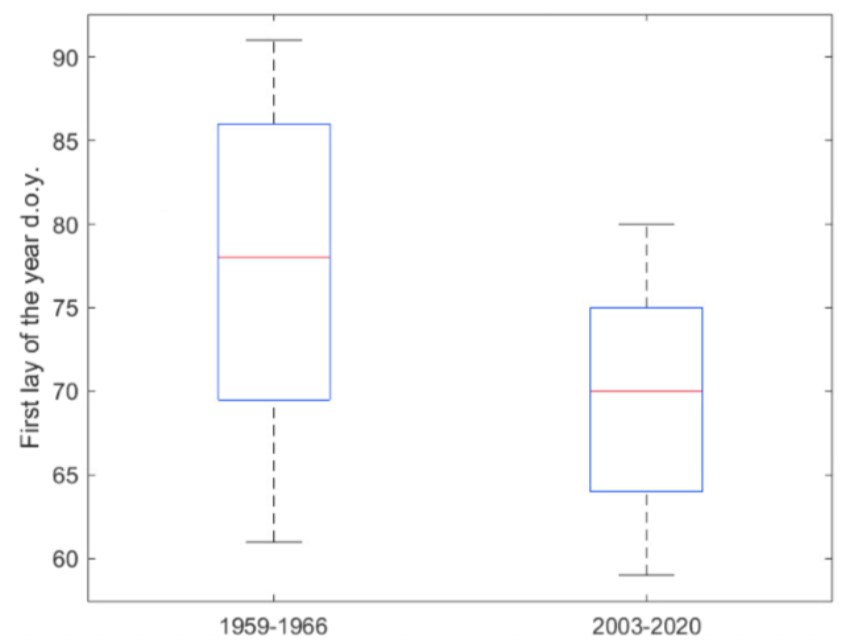
Egg laying dates changed significantly between the two study periods.
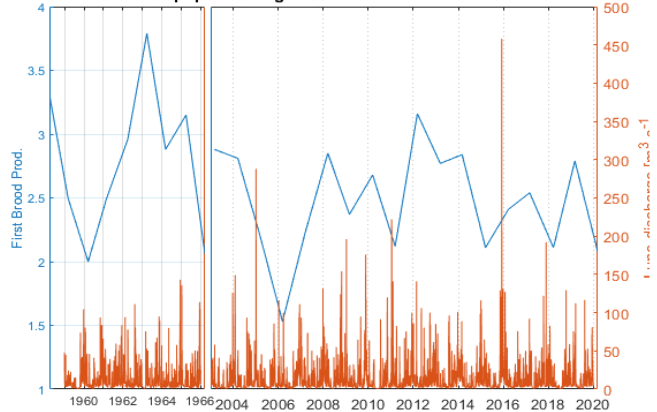
Brood population against river flow.































































































































































